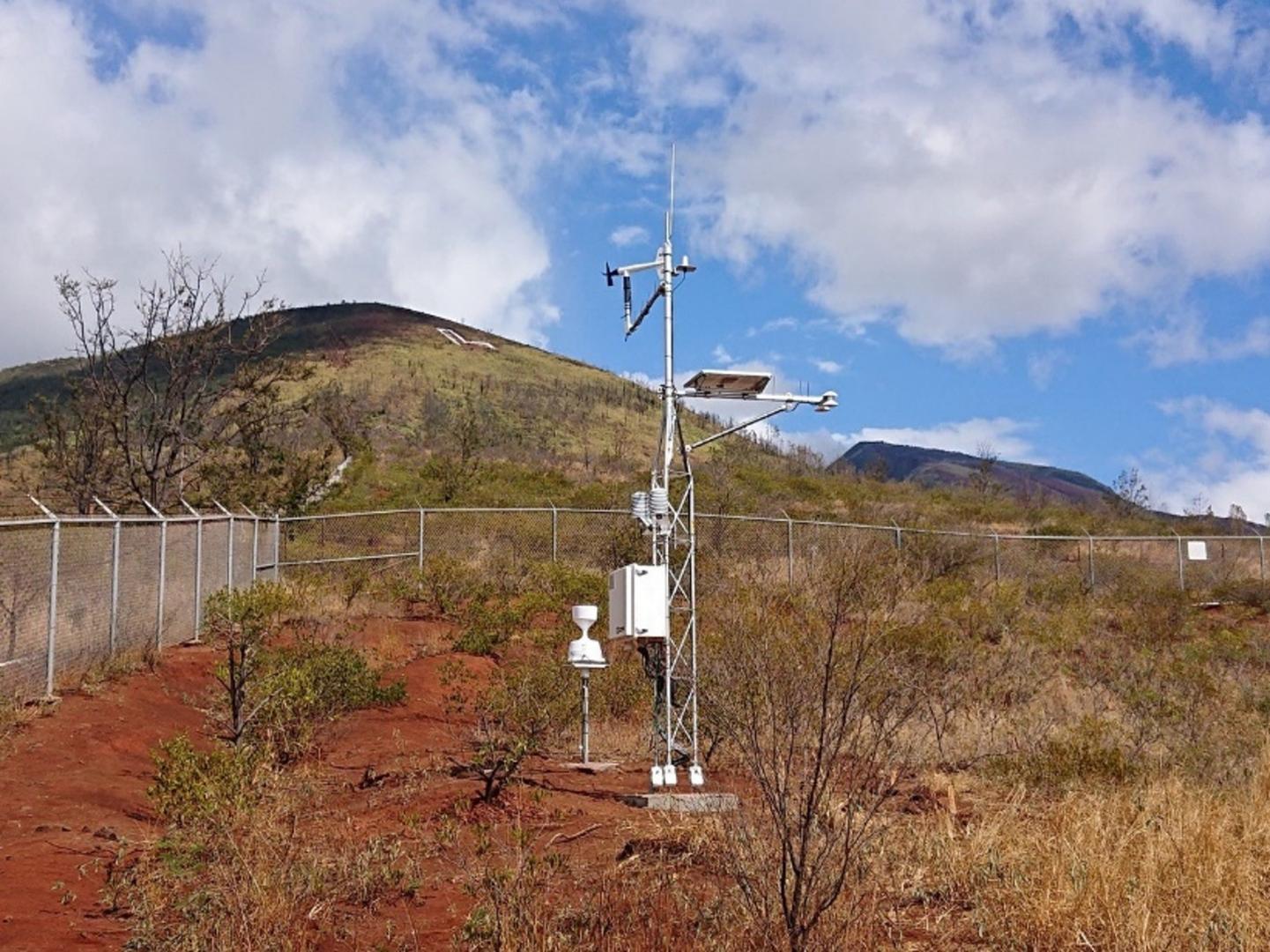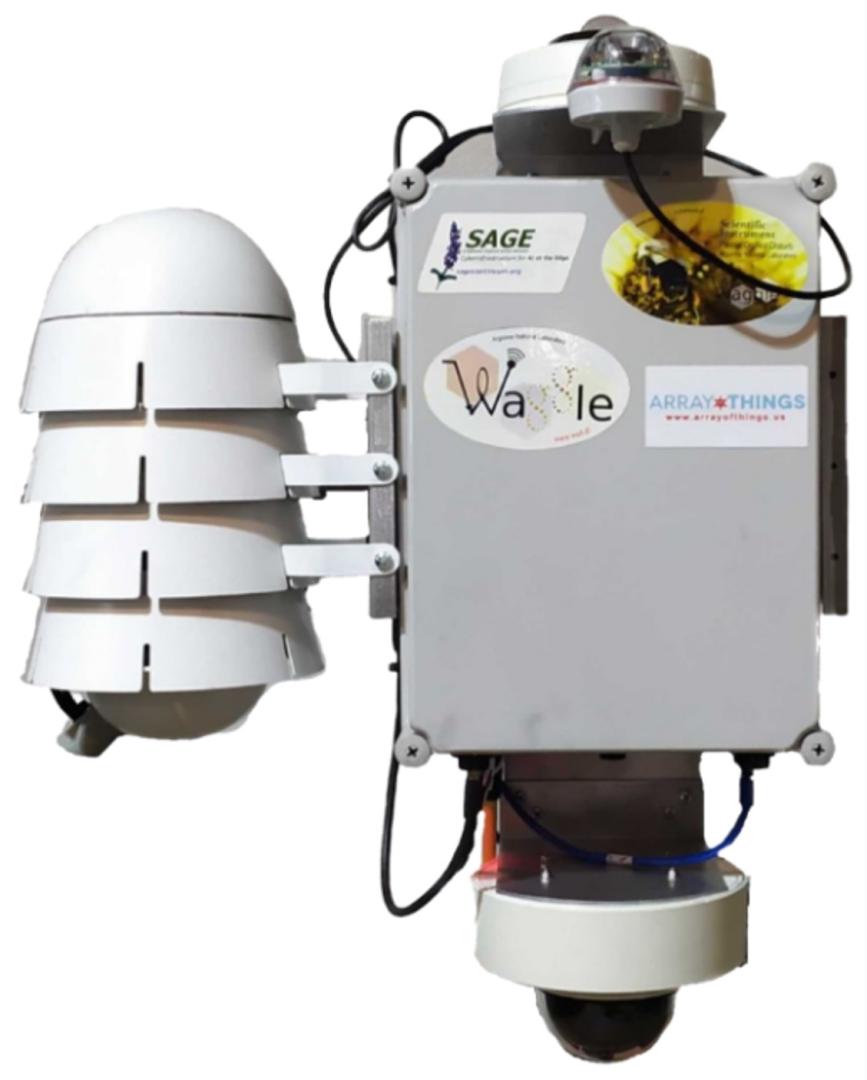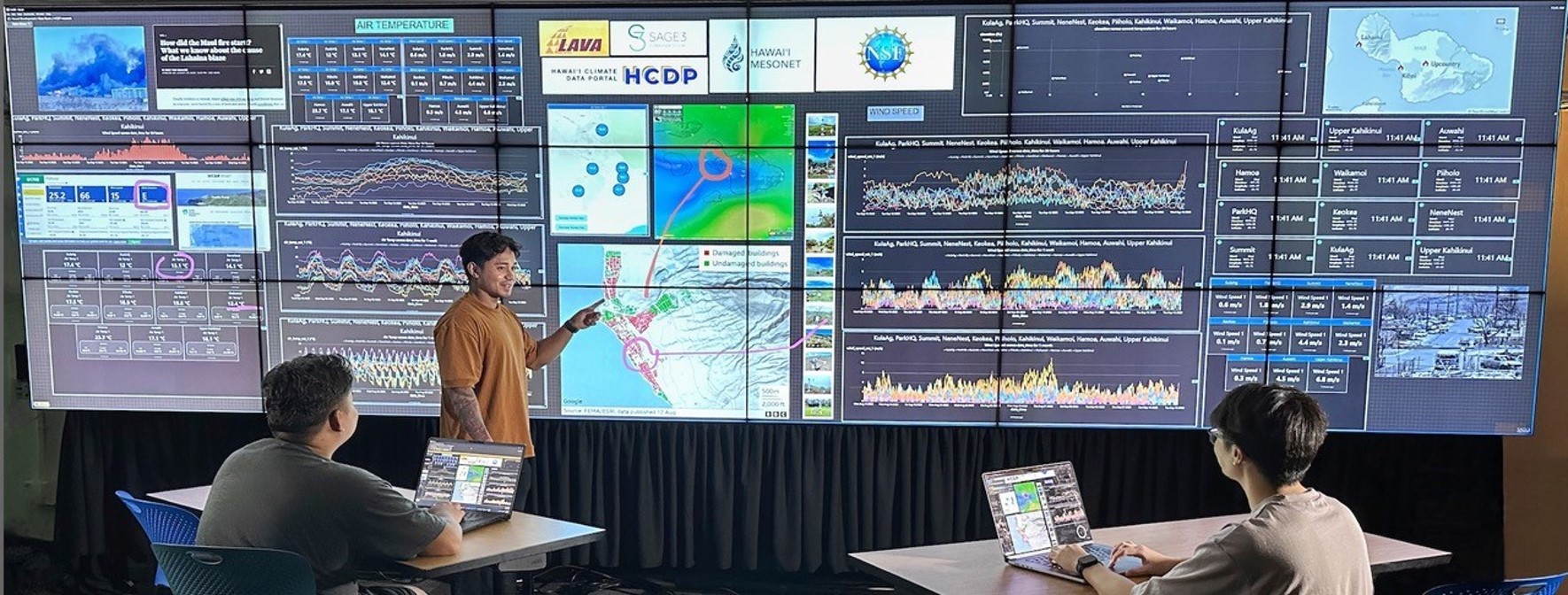HONOLULU – Recognized for its distinctive strengths in earth and ocean sciences, astronomy, evolutionary biology, energy research and environmental sciences, the University of Hawaii at Manoa (UH Manoa) utilizes millions in grant funds to generate projects involving cutting edge discoveries. One such project is a multi-hazard monitoring station deployed to Lahaina following the island’s horrific wildfire.

The project is led by principal investigator and information and computer science professor, Jason Leigh (director of UH’s Laboratory for Advanced Visualization & Applications) and co-principal investigators Thomas Giambelluca and Christopher Shuler from UH Mānoa’s Water Resources Research Center.
“The project will gather essential climate and pollutant data to aid clean-up activities in Lahaina, and obtain performance and reliability data, guiding both instrument enhancements and Lahaina’s recovery planning,” said Leigh.
At a cost of $200,000, the multi-hazard monitoring station was funded as part of four UH Manoa project grants which totaled roughly $800,000 in expedited Rapid Response Research (RAPID) grants from the National Science Foundation in the wake of the deadly Maui wildfires. RAPID funding is used for proposals having a severe urgency regarding availability of, or access to data, facilities, or specialized equipment, including quick response research on natural disaster. https://www.nsf.gov/awardsearch/showAward?AWD_ID=2346568&HistoricalAwards=false
Located at the Lahaina Water Treatment Plant, the multi-hazard monitoring and detection station involved putting together UH Manoa’s climate system (an observation station) with Northwestern University’s Sage Artificial Intelligence (AI)-enhanced instrument platform.
AI refers to computer systems capable of performing complex tasks that historically only a human could do, such as reasoning, making decisions, or solving problems.
“The goal is for the AI to produce high level descriptions/interpretations of what it has observed, rather than only sending raw data back to emergency response staff. In this study however, we are simply evaluating the robustness of the AI hardware under heavy duty cycles in locations with high heat and humidity, such as Lahaina,” said Leigh. “The Hawaii Mesonet is targeted at collecting climate-related data. The Waggle sensor collects additional data. The two combined we are defining as our multi-hazard system.
The Waggle sensor is modular, allowing users to plug in capabilities depending on what they are monitoring. The sensor will be customized.
“In this case, the Waggle sensor will be customized to provide high quality barometric pressure, temperature, relative humidity, rainfall, wind speed and direction measurements as well as observations on meteorological conditions, including particulate matter (PM2.5, PM10) and gas species concentrations (NO, NO2, O3, CO),” said Leigh.
According to Leigh, a continuous PTZ Optical camera, a GPS and rainfall sensor will be utilized.

“The Hawaii mesonet sensor also has soil moisture sensors and measures barometric pressure, relative humidity, rainfall and windspeed, said Leigh. “Each sensor is scanned every 4 seconds, and averages and other statistics are recorded every 5 minutes. Data is transmitted every 15 minutes to provide real-time information. All collected data will be transmitted via a Starlink satellite link and stored on the Hawaii Climate Data Portal (HCDP).” https://www.hawaii.edu/climate-data-portal/.
According to Leigh, a reliable broadband internet is crucial to the efficiency of the monitoring system. “Data must be transmitted without interruption. We simply cannot use a satellite system that inclement weather threatens its performance,” Leigh said.
Leigh stated that a visualization dashboard will be built using SAGE3 (the Smart Amplified Group Environment- www.sage3.app) that allows the public to collaboratively view the data from the sensors. See photo below.

“The intended outcome of this project is two-folded: Tying this system in the larger system of public facing monitoring with real-time data fed via a resilient communication system and leveraging AI with field gathered data,” Leigh said.
A renowned scholar in state-of-the-art technology, Leigh believes that this project can provide a wealth of decision-making data in preventing or minimizing future risks.
For additional information, visit:

